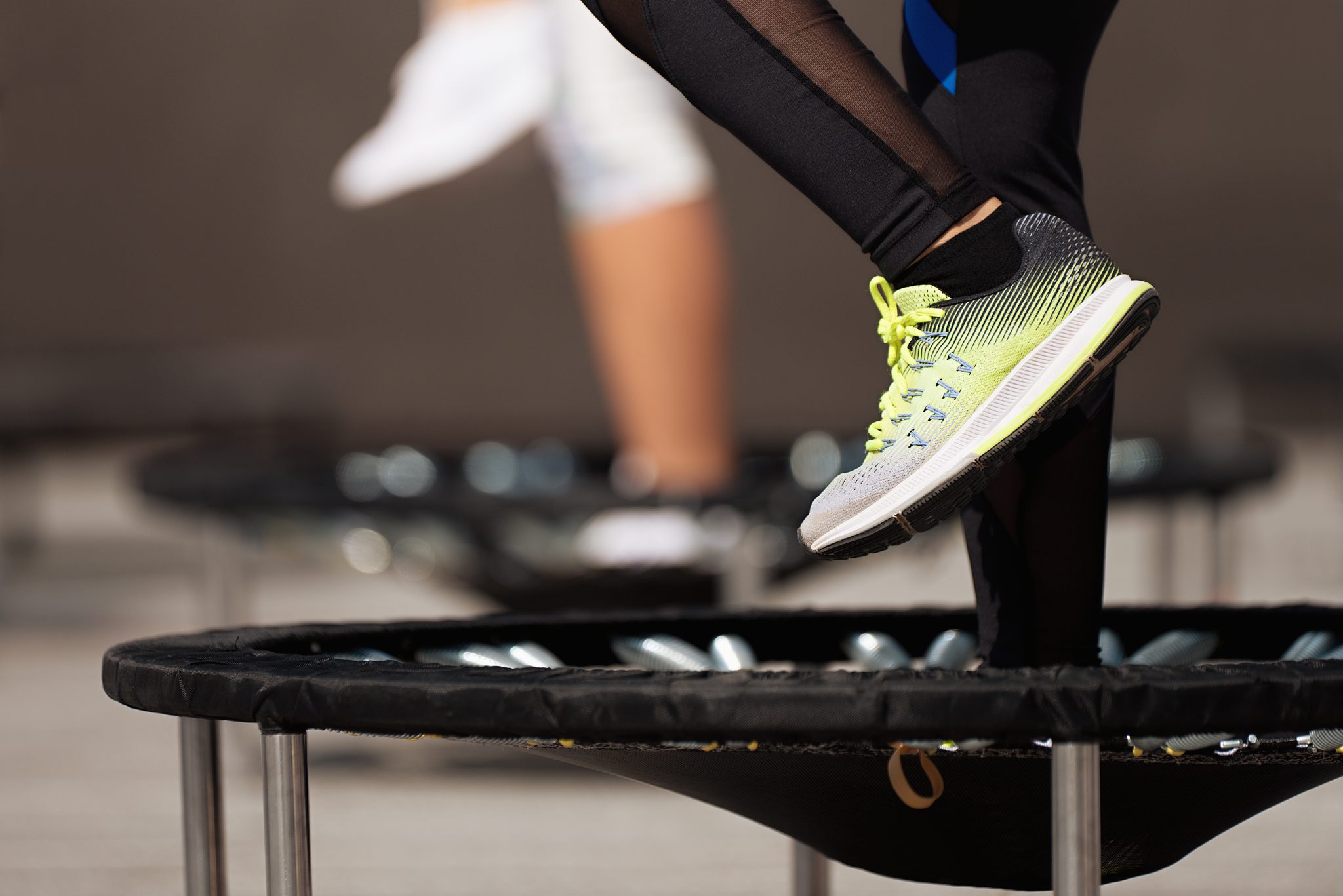Trampoline-based exercise – or rebounding – is a low-impact, high-intensity sport which offers a whole host of benefits. But how can we incorporate it into our lockdown workouts?
There are some people who relish in the routine of going for a run or doing home workouts, finding it incredibly beneficial for their wellbeing. But for many of us, trying different things and mixing up our exercise regime is key to keeping us motivated. That’s never been more true than now, as we find ourselves in the middle of another lockdown, where bodyweight workouts and walking are feeling a little tedious.
It’s why we’re always on the lookout for new ways of working out – such as boxing, barre and skipping. When we heard about the wonderful world of rebounding exercise – or trampoline-based fitness, in simpler terms – it’s safe to say that we were intrigued.
You may also like
These 5 unique fitness challenges will help you push yourself in 2021
Katy Harrington, Stylist’s digital commissioning editor, fell in love with the workout style during lockdown. “I had been to a few ‘rebounding’ classes in east London (for £15 a hour!) and I thought I could recreate it at home. My dad happened to find a mini-trampoline in his garage, so when I went back to their house to spend lockdown I started using it while recalling some of the old fashioned aerobics moves that I had done in my classes.
“Even though I lack coordination, I found it easy – and a super workout. I became a bit obsessed with Lauren Roxborough and her 12-15 minute workouts. She talks about the benefits to the lymphatic system and how it works wonders for digestion, but regardless of all that, I just got so into it and have done it at least three times a week since.”
Not only is rebounding a low-impact sport which offers a wide range of benefits, it’s also really fun – making it that much easier to convince yourself to get moving. Below, we’ve taken a look at what rebounding exercise really is, and the benefits you can expect from getting involved.
What is rebounding?
Rebounding is a low-impact cardio workout that uses a mini-trampoline. Don’t be mistaken into thinking this exercise is simply a bit of nostalgic bouncing around. In fact, the trampoline is only there to act as a springy platform for the aerobic exercises that you’ll be performing, so the jumping technique will probably feel unfamiliar at first compared to how you’d naturally jump.

What are the benefits of rebounding?
Rebounding isn’t just a fun way to work out – it also offers a load of great benefits.
The springy, shock-absorbent nature of the trampoline’s surface means that rebounding is a great low impact sport – which makes the impact on your body’s joints minimal, especially compared to high-impact sports such as running.
According to a 1980 study from NASA, rebounding is also more effective in building bone and muscle mass than running. The research, which looked at how different forms of exercise helped astronauts regain bone loss and muscle mass after time in space, found that rebounding increases oxygen uptake more than running does due to the increased g-force. Therefore, it benefits the body on a cellular level at a greater rate than other methods of exercising.
Studies have also found that rebounding can help promote balance, agility and coordination
Studies have also found that rebounding can help promote balance, agility and coordination.
Kimberlee Perry, CEO of ((BOUNCE)), a studio that offers rebounding classes, says: “Exercise should never feel like a chore – and what’s more fun than bouncing on a trampoline? When you add in the dance music and the electric vibe in class, fitness doesn’t get any better than this. But it’s not all fun – rebounding is fiercely effective. It can be up to three times more effective than jogging or the same routine done on the floor, thanks to the added g-force and gravity from the trampoline.
“It’s also an inclusive workout open to all ages and abilities, whether you work out regularly and want to try something different, or are returning to fitness from injury, pregnancy or simply time off from exercise. The low impact nature of the trampoline means it’s a safe and comfortable workout for most people, so definitely give it a go.”
And it’s perfect for doing at home, adds Katy: “There’s so little space required – I’m in a tiny flat and can fit it in. In fact, it’s really the only thing I’m consistent with because it makes me so happy. I even walk on it when I’m on Zoom calls (camera off!).”
How can I get involved?
There are lots of different ways to get involved in trampoline-based exercise, depending on what suits you.
Organisations such as ((BOUNCE)) offer home classes that you can stream for high intensity, dance-choreographed classes. Or make like Katy and follow YouTube videos for an intro to the workout.
To make sure you’re getting the most out of rebounding (and assuming the correct form), we asked Perry to explain the best way to do a trampoline workout.
“To get the best workout, the correct form is to lean forward slightly, brace your core and squeeze the abs,” she explains. “Bend your knees and, as you jump, push down into the trampoline – rather than bouncing high up into the air like you would on a trampoline as a kid. Try not to bounce with flat feet, and instead you should jump from the balls of your feet.”
Follow @StrongWomenUK on Instagram for the latest workouts, delicious recipes and motivation from your favourite fitness experts.
Images: Getty
Source: Read Full Article
